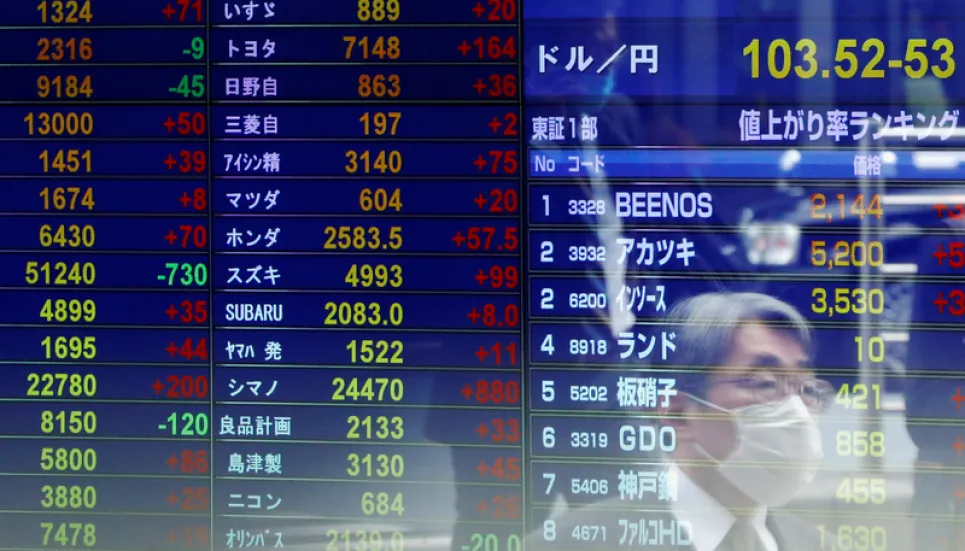
Asian shares were trying to avoid a fourth straight session of falls on Wednesday as U.S. stock futures steadied in the wake of a pullback in large-cap tech darlings.
Holidays in Japan, China and South Korea helped cushion markets, leaving MSCI's broadest index of Asia-Pacific shares outside Japan up 0.1 per cent.
Japan's Nikkei was shut, but futures recouped early losses to stand at 28,850 compared to the last cash close of 28,812.
India's Nifty 50 started up 0.7 per cent ahead of a speech by the country's central bank governor, which might include policy changes to support the pandemic-stricken economy.
Nasdaq futures edged up 0.3 per cent after a sharp fall overnight, while S&P 500 futures also added 0.3 per cent.
The Nasdaq had dropped 1.9 per cent on Tuesday as some big tech names ran into profit-taking, including Microsoft Corp, Alphabet Inc, Apple Inc and Amazon.com Inc. [.N]
Stretched valuations were tested when U.S. Treasury Secretary Janet Yellen said rate hikes may be needed to stop the economy overheating.
She later waked back the comments, but it reminded investors that rates would have to rise at some point in the future.
"Moderate inflation and a slow moving Fed would continue to be supportive, but inflation and a reactive Fed may prove to be a negative for valuations," said Tapas Strickland, a director of economics at NAB.
"Either way yields and equities are likely to be in a dance as much better than expected economic data continues to challenge central banks' rates guidance."
One such challenge looms on Friday when U.S. payrolls data are forecast to show a hefty rise of 978,000, while some estimates go as high as 2.1 million.
So far, Federal Reserve Chair Jerome Powell has argued the labour market is still far short of where it needs to be to start talking of tapering asset buying.
Minneapolis Fed Bank President Neel Kashkari, a notable dove, on Tuesday said it may take a few years for the economy to get back to full employment.
The Fed's dogged patience allowed yields on U.S. 10-year notes to ease back to 1.59 per cent, from last week's top of 1.69 per cent, though the market has struggled to break below 1.53 per cent.
Just the mention of higher U.S. rates was enough to help the dollar recoup a little of its recent losses.
The euro dropped back to $1.2020 and threatened to breach important chart support in the $1.1995/1.2000 area. A break would open the way to a retracement target at $1.1923.
The dollar held at 109.27 yen, having shied away from resistance at 109.61. Against a basket of currencies, the dollar eased a touch to 91.180, but remained some way above the recent two-month low of 90.422.
The New Zealand dollar blipped higher to $0.7173 when local jobs data proved stronger than expected.
In commodity markets, palladium soared to a record high on worries over short supplies of the metal used in emissions controlling devices in automobiles.
Gold was left lagging at $1,783 an ounce.
Oil prices climbed to seven-week peaks as more countries opened their borders to travellers, improving the demand outlook for petrol and jet fuel.
Brent added 54 cents to $69.42 a barrel, near its highest since mid-March, while U.S. crude rose 52 cents to $66.23 per barrel.